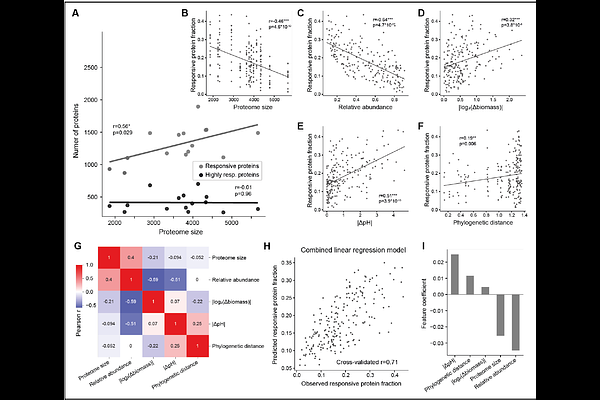Interspecies interactions drive bacterial proteome reorganisation and emergent metabolism

Interspecies interactions drive bacterial proteome reorganisation and emergent metabolism
Kamrad, S.; Mozzachiodi, S.; Blasche, S.; Aulakh, S. K.; Scheidweiler, D.; Basile, A.; Guan, R.; Bradley, R.; van den Berg, N. I.; Muelleder, M.; Ralser, M.; Patil, K. R.
AbstractSpecies in microbial communities must respond to the presence of others to stave off resource competition or to capitalise on new resources that may become available due to additional metabolic activities. Such metabolic interactions manifest in growth effects such as competitive exclusion or cooperative growth boost. However, intra-cellular molecular changes that underpin these responses are very sparsely studied, preventing mechanistic insights into community function and dynamics. Here, we analyse meta-proteomics and metabolomic responses in 104 pairwise co-cultures of 15 diverse gut bacteria in a nutrient-rich medium. These co-cultures span a diversity of ecological interactions with competition, amensalism and exploitation being prominent, and with around one in five positive interactions. The species in co-cultures feature substantial molecular responses, with typically more than 60% of the proteome changing in response to at least one partner. Even closely related species and ortholog proteins show different expression profiles in response to the same partner indicating functional diversification at both protein and species level. We show that the magnitude of these responses is determined by genome size, species abundance, and pH. Small-molecule transport and carbon metabolism are among the most responsive processes indicating pervasive metabolic interactions. Using metabolomics, we identify likely cross-fed metabolites, emergent polyamine metabolism, and niche partitioning in amino acid utilisation. Overall, our study shows how bacteria respond to the presence of other species through extensive remodelling of their proteome and metabolome.